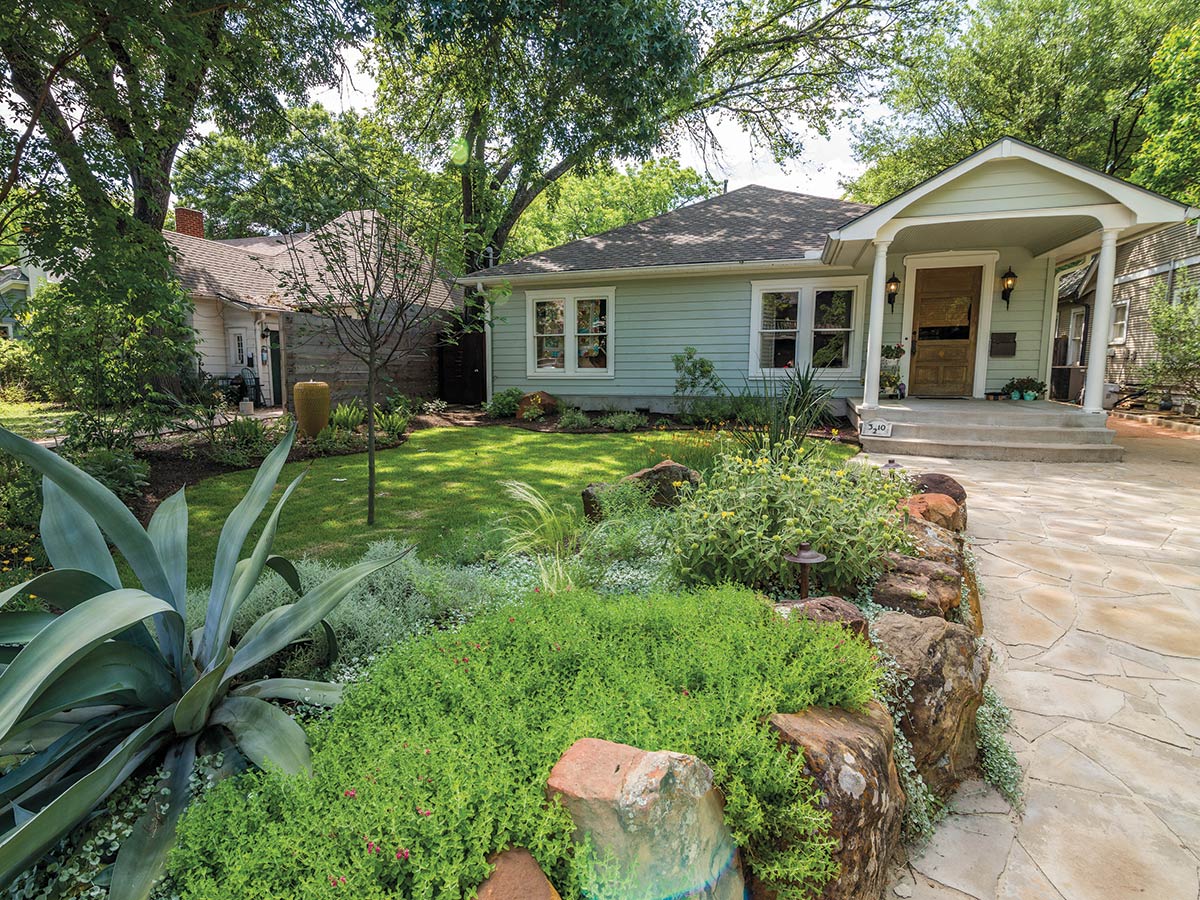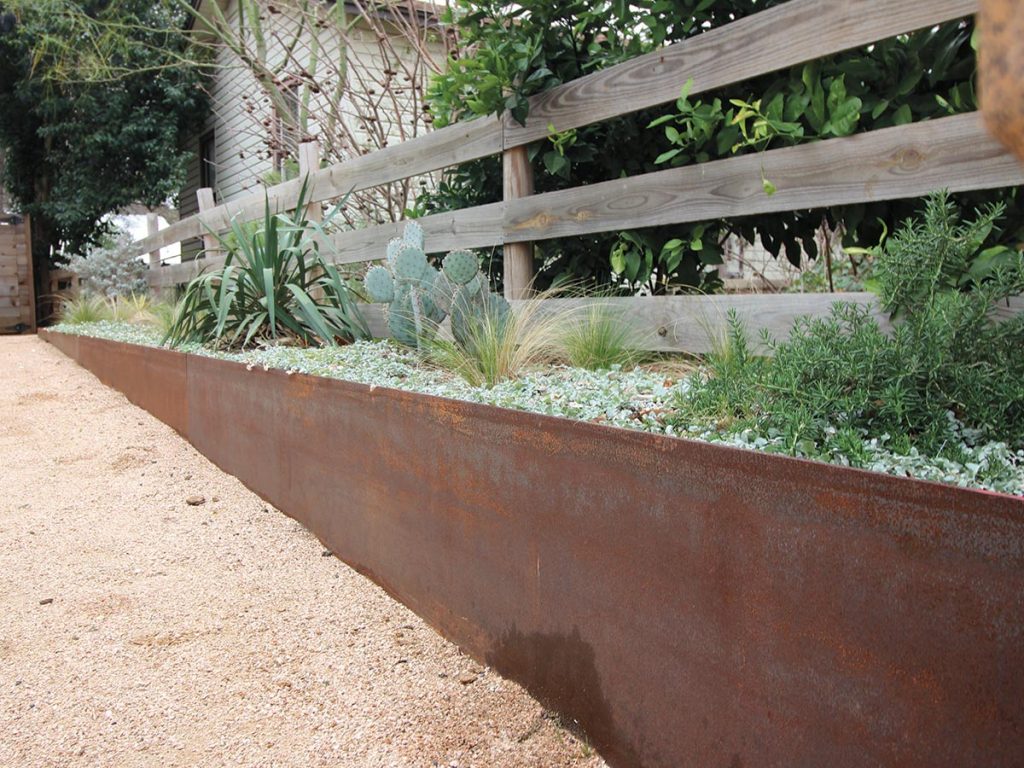Sway Your HOA

This home in Austin limited its lawn space in favor of native plants such as silver ponyfoot (Dichondra argentea) and Salvia sp. PHOTO AND DESIGN Native Edge Landscape
A summer of sprinklers and eye-popping water bills prompts many a homeowner to scrap their lawn in favor of water-thrifty native plants. But those in neighborhoods governed by a homeowners association (HOA) can find it difficult to get approval for a water-wise yard makeover. Some HOAs require turf grass in the front yard and limit other plants to a pre-approved selection of traditional choices. Even sympathetic HOAs may feel bound by rules codified decades earlier, in less water-conscious times.
When it comes to approaching an HOA about changing outdated landscaping rules, homeowners may find an ally in their local or state government. Water shortages due to drought and rivers and bays contaminated by chemical runoff have spurred many cities to urge citizens to conserve water, cut back on chemical fertilizers and pesticides, and reduce lawn in favor of water-wise native plants. States such as Texas and Florida have even passed laws that prevent HOAs from banning water-wise landscaping, although they may still require members to follow landscaping guidelines and submit proposed changes for approval.
Bob Beyer, a resident of Avery Ranch in northwest Austin, helped convince his HOA to accept water-wise landscaping: “The argument we presented to the HOA was, ‘Look, the entire city of Austin is encouraging xeriscaping, a reduction in the use of water, and the use of native and adapted plants. Why should we be different? We are in the city of Austin.’ They couldn’t argue with that.”
Other HOAs have gone even greener, not only permitting but encouraging native-scaping among residents and replanting the neighborhood’s public spaces. Cynthia Wilcox, vice president and grounds chair of Austin’s Travis Country neighborhood (near the Barton Creek Greenbelt), says her HOA has gone completely native and organic with its grounds maintenance and encourages members to do the same. “People who do a really beautiful job of replacing turf with something native are highlighted in the neighborhood newsletter or awarded Yard of the Month. You don’t have to have a green [non-native] St. Augustine lawn to get Yard of the Month in our neighborhood. And once people start making beautiful native landscapes, it’s contagious.”
If your own HOA is not quite there yet, here are some ways to open the conversation and get your native-scape approved:

This thin stretch of driveway-side land used to house grass and garbage cans; now, an iron planter displays native Mexican feather grass (Nassella tenuissima) and prickly pear (Opuntia sp.). PHOTO AND DESIGN Native Edge Landscape
CITE OFFICIAL WATER-WISE PROGRAMS Is your city or state promoting water-wise landscaping? If so, share their guidelines with your HOA. Ask why your neighborhood shouldn’t be doing its part to save water and reduce chemical use.
BE PROACTIVE “If you tell your HOA board, ‘We need xeriscaping guidelines,’ well, they’ve got other fish to fry,” Beyer says. “Don’t ask, do.” Write the guidelines yourself and present them to the board. Make it easy for them to approve changes rather than have to create new rules from scratch.
SEEING IS BELIEVING Gather pictures of attractive water-wise yards in your area and share them with board members. “People have to see with their own eyes what a xeriscaped yard looks like,” says Beyer. Show them that it can be beautiful.
MAKE IT PERSONAL, NOT POLITICAL Consider what will motivate people who aren’t as tuned into ecological concerns, Wilcox says, and avoid the appearance of “the lone hippie trying to make people get rid of their lawns.” Someone who likes to go fishing, for example, might dislike algae blooms in the local creek caused by fertilizer runoff, and you can use that to promote organic gardening practices.
APPEAL TO THE WALLET Using native plants saves money in all kinds of ways, says Wilcox. “You don’t always have to be buying and applying chemicals. You don’t have to buy specialized soils and amendments. You don’t have to do as much pest control. And you don’t have to water the plants nearly as much.” This adds up to big cost savings, both for individual homeowners and for HOAs paying for grounds maintenance.
FIND A WORKAROUND Perhaps you can more easily obtain an exemption from your HOA’s covenants than approval from a rule-bound landscaping committee. “My neighborhood’s covenants required 100 percent turf grass in the front yard,” Beyer says, “so I didn’t ask for approval to xeriscape. I asked for an exemption from the covenants, and they granted a 75 percent exemption. Now … I only have to have 25 percent [turf].” That allowed him to plant drought-tolerant native plants around a much smaller lawn.
PLAY THE LONG GAME Volunteer to serve on your HOA’s landscaping committee, and encourage like-minded neighbors to join you. Change the rules if you can. If you run into resistance, highlight beautiful native plantings in the neighborhood’s newsletter and social media – but don’t preach. “People get tired of being schooled,” Wilcox says, “so just show lots of pretty pictures. After a while, resistance decreases, and people who are motivated can then make forward progress. In an HOA, sometimes just a lack of resistance is all you need to make a big change.”
For more information on sustainable landscaping, visit landscapeforlife.org.
Pam Penick writes the gardening blog Digging and is the author of “Lawn Gone!” and “The Water-Saving Garden.”
